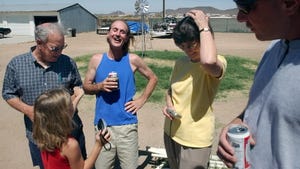'Making a Murderer' rides TV's real-crime wave
Crime does pay — at least on television.
The non-fiction, true-crime genre is surging. On Dec. 18, Netflix released the 10-episode Making a Murderer, which chronicles the story of a wrongfully convicted Wisconsin man later sent to prison for a different crime, and Discovery Channel launchesKilling Fields, a real-time look at a Louisiana cold case murder investigation, on Jan. 5 (10 p.m. ET/PT).
They come on the heels of two mesmerizing projects, HBO’s The Jinx — which uncovered new evidence in the case of suspected killer Robert Durst — and the first season of the Serial podcast, which investigated a 1999 murder and helped pave the way for a court decision that granted the man convicted of the slaying the right to appeal. And in recent years, real-life crime has been a staple of newsmagazine shows such as CBS’ 48 Hours, NBC’s Dateline and several cable networks, led by the fast-growing Investigation Discovery and including TNT's Cold Justice from Law & Order franchise creator Dick Wolf.
Real crimes have special resonance, says Discovery executive vice president Denise Contis. “They are unbelievable, dramatic stories that almost seem unreal. The fact that they are real (makes) them more compelling."
Netflix's Murderer takes an in-depth look at the complicated, polarizing case of Steven Avery, a Wisconsin man released from prison in 2003 after serving 18 years for a wrongful rape conviction only to be rearrested and convicted of a woman's murder.
"Steven's status was unique and compelling," says Laura Ricciardi, who directed Murderer with Moira Demos. "It was a wonderful opportunity to hold a mirror up to the criminal justice system because of the range of experiences he had in it."
Technological advances have made it faster and cheaper to research and produce stories, and there are more outlets, such as podcasts, social media and streaming services, to present the work, Ricciardi says.
Fields, produced by Emmy winner Tom Fontana and Oscar winner Barry Levinson, is named for areas known for the disposal of bodies. Future seasons could focus on crimes in different parts of the country.
The initial entry looks at the unsolved 1997 killing of Louisiana State Universitystudent Eugenie Boisfontaine, whose body was found in a Louisiana bayou. The seven-episode series features fly-on-the-wall access to the reopened investigation, headed by retired detective Rodie Sanchez, who returns to work to fulfill a promise he made to the victim's mother that he would find the killer.
Discovery was looking for "compelling characters, great storytelling (and) a strong forensics component," Contis says. There was "the conceit of killing fields, that all over the country there are these burial grounds that nobody knows about."
The real-time element carries a risk: The case is still under investigation, and Contis isn't sure how it will be resolved. But "we’re very satisfied" with the story, she says. "There have been unexpected twists and turns that we never anticipated."
Though the format appears to be enjoying a spike in interest, the mix of life-and-death stakes and extreme behavior have long made it a popular genre.
"The law and justice beat has in it a definition of humanity that is fascinating, (including) people who you believe would be above the law but have perpetrated some of the most heinous crimes. How does that happen?" says 48 Hours executive producer Susan Zirinsky, who adds that the forensic-technology "explosion" heightens the drama. People are drawn to depictions "of humanity at its most brilliant, at its most flawed, at its most depraved."

